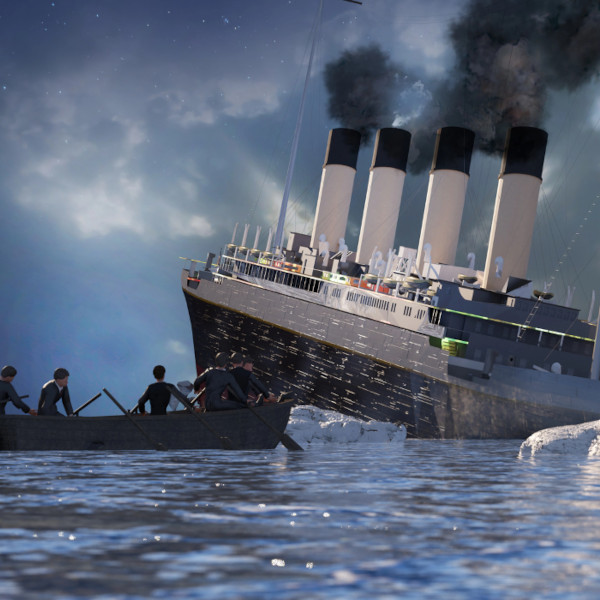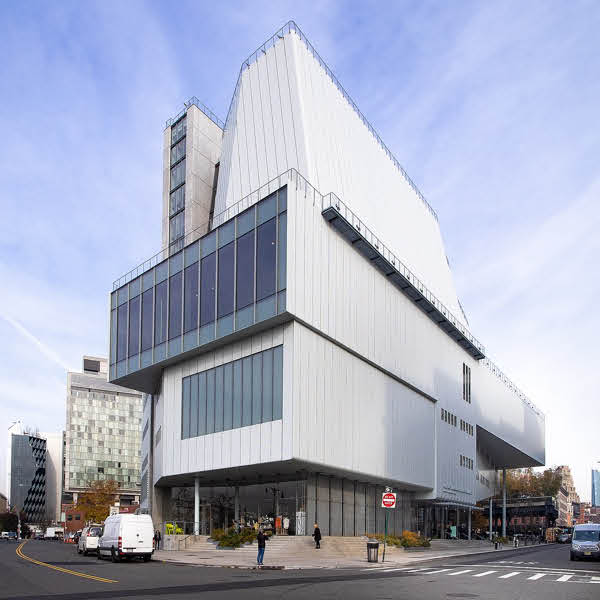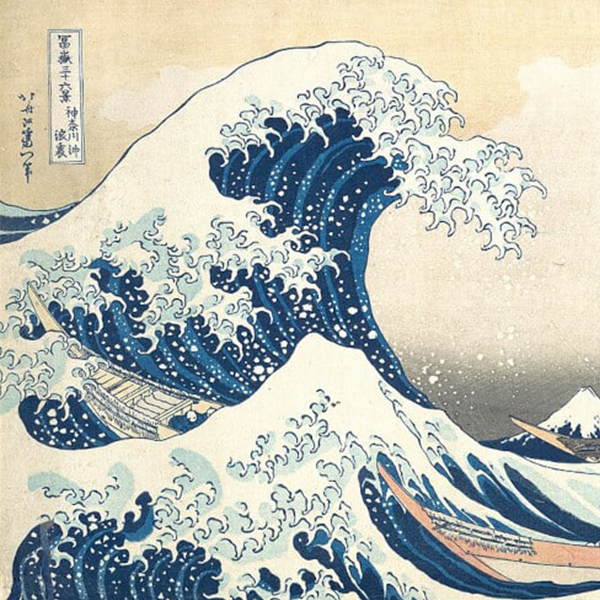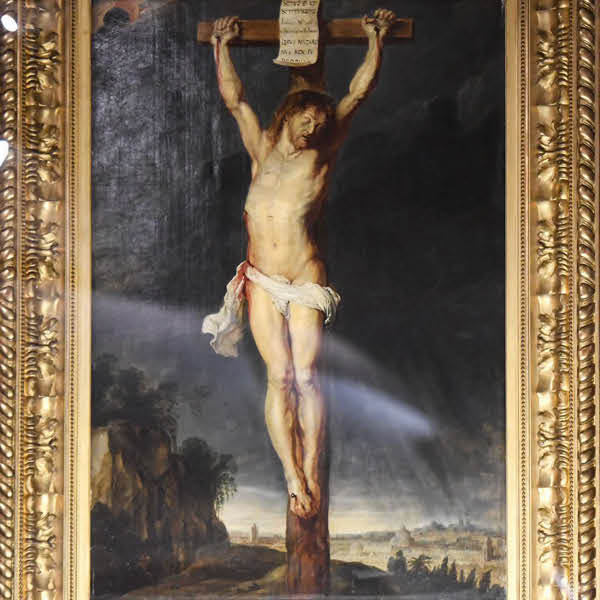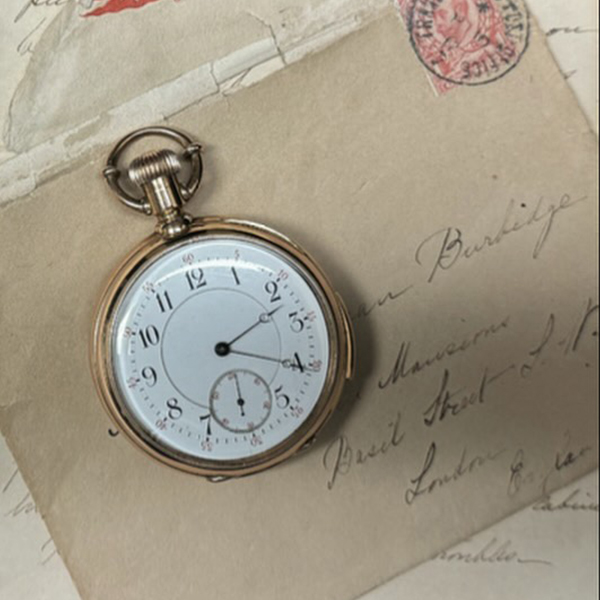
Queen Elizabeth II in 2015. (Photo: cheekylorns2/Depositphotos)
September 8, 2022 was the end of an era. Queen Elizabeth II died peacefully, ending her time as Britain’s longest-reigning monarch. For 70 years, Queen Elizabeth fulfilled her royal duties with stoic pride. As the head of the royal family, she inspired millions as a figure who represented responsibility, duty, and patriotism.
Her sense of duty was exemplified by her meeting with new Prime Minister Liz Truss just two days before her death. On September 6, she asked the prime minister to form a new government, making Truss the 15th prime minister that served under her reign. The first was Winston Churchill. Tellingly, Truss’ meeting was only the second time that the Queen asked a new PM to form a government outside of London. The meeting took place in Scotland, at Balmoral, where Queen Elizabeth spent her summers, as there were concerns about her mobility.
Two days later, at 96 years old, she passed. As the second-longest reigning sovereign in the world—only Louis XIV lasted longer—Queen Elizabeth shepherded Britain from an empire to a Commonwealth and saw the world change in the post-World War II era. Under her reign, she saw the Cold War end, the European Union form, and Brexit. She also saw a shift in attitudes toward Britain as Commonwealth members broke away and demanded apologies for the country's role in the slave trade and mistreatment of Indigenous people.
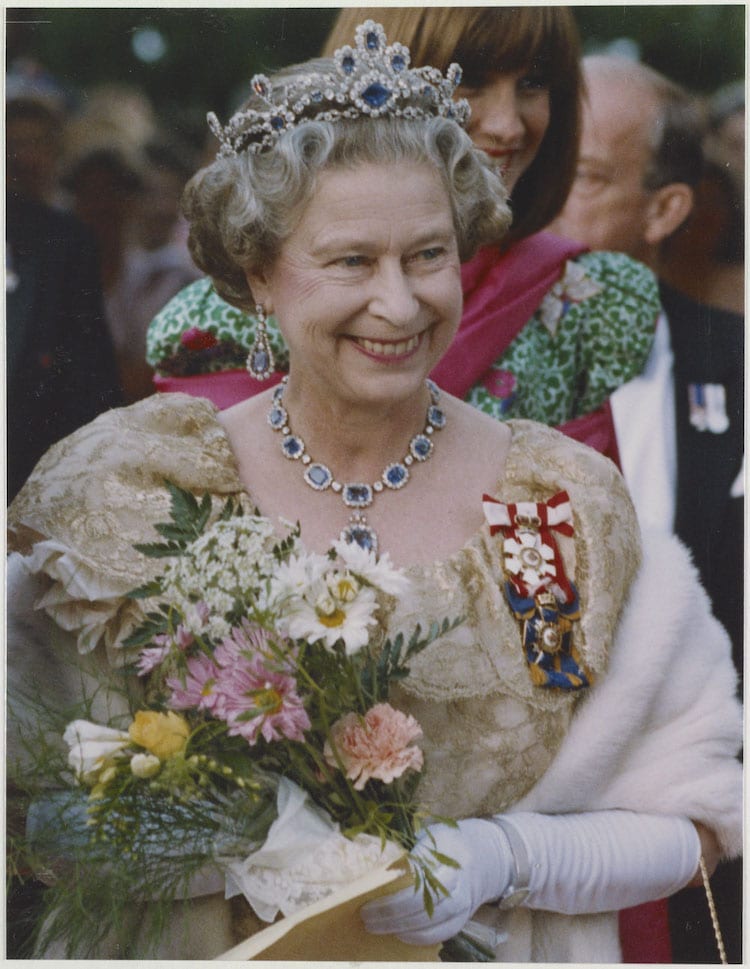
Queen Elizabeth II in 1990. (Photo: Library and Archives Canada, CC BY-NC-ND 2.0)
Through the ebbs and flows of history and the tides of controversy that washed over her own family, somehow Queen Elizabeth remained a beloved figurehead. Though she was never expected to wear the crown, her ascension to the throne at age 25 thrust her into a role of service for the rest of her life. And most certainly, she kept the promise that she made on the day of her coronation in 1953, when she declared, “I have in sincerity pledged myself to your service, as so many of you are pledged to mine. Throughout all my life and with all my heart I shall strive to be worthy of your trust.”
Now, it is up to her son, Charles, to take up the reigns and follow in her footsteps. Effective immediately, he will be known as King Charles III, with his wife Camilla taking on the title of Queen Consort. Here's a look at what we can expect in the coming days and months following Queen Elizabeth's death.
Queen Elizabeth II
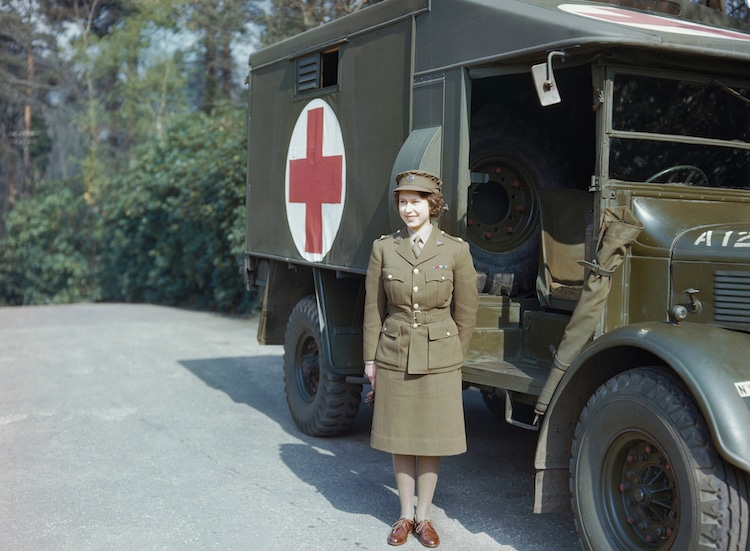
Princess Elizabeth in the Auxiliary Territorial Service, April 1945 (Photo: Imperial War Museum via Wikipedia, Public domain)
Full Name | Elizabeth Alexandra Mary Windsor |
Born | April 21, 1926 (London, England) |
Died | September 8, 2022 (Balmoral Castle, Aberdeenshire, Scotland) |
Reign | February 6, 1952 – September 8, 2022 |
Coronation | June 2, 1953 |
Spouse | Prince Philip, Duke of Edinburgh (m. 1947; died 2021) |
Children | King Charles III (b. 1948);
Anne, Princess Royal (b. 1950);
Prince Andrew, Duke of York (b.1960);
Prince Edward, Earl of Wessex (b. 1964) |
Born in 1926 to the Duke and Duchess of York, she was given the affectionate nickname of Lilibet as a child. Although she was third in line to the crown at the time of her birth, there was little expectation that she would one day hold the crown. Her uncle, Edward, who was first in line, was still quite young. Initially, it was thought that he would have children who would become future heirs. However, history had a different plan.
After the death of Elizabeth's grandfather, King George V, her uncle ascended to the throne as King Edward VIII. Less than a year later, he abdicated due to his desire to marry divorced socialite Wallis Simpson, and Elizabeth's father became king. As Elizabeth's parents had no male heirs, she was next in line to take the crown. When her father, King George VI, died after a long illness in 1952, she took over as monarch.
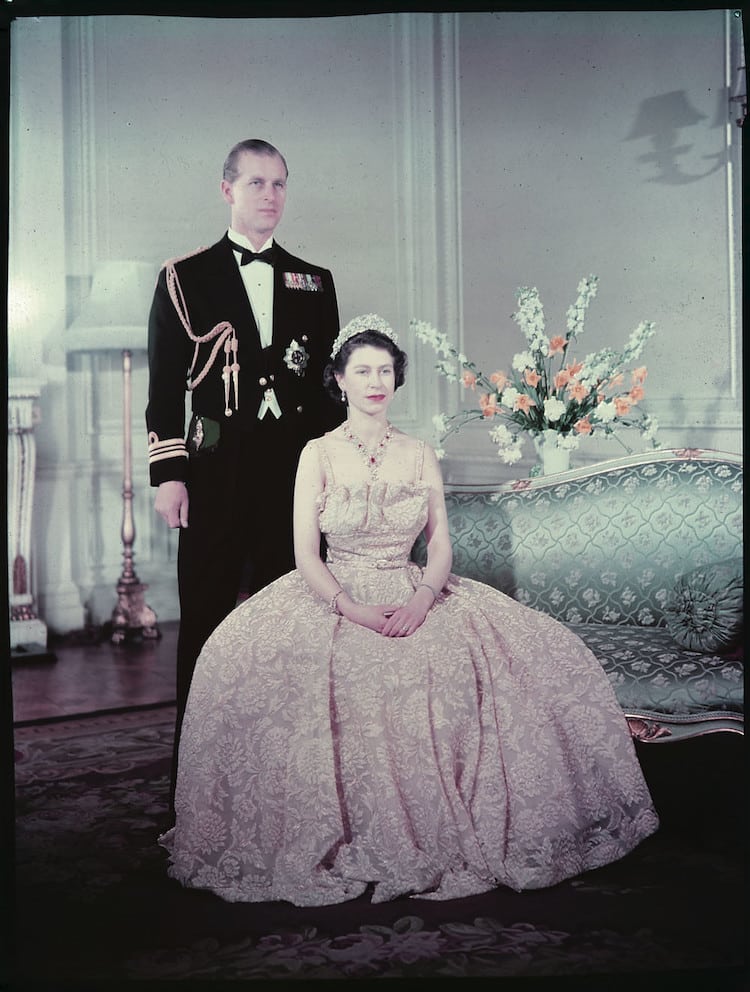
Queen Elizabeth II and Prince Philip, Duke of Edinburgh in 1952. (Photo: Library and Archives Canada, CC BY 2.0)
By the time she became Queen Elizabeth II, she had already been performing royal duties. Married to Prince Philip since 1947, she was also a mother, having given birth to Charles just a year later. Prince Philip, who passed away in 2021, was a constant source of strength and support. In a 1997 interview, she reflected, saying, “My husband has quite simply been my strength and stay all these years, and I owe him a debt greater than he would ever claim.”
Her coronation was the first to be televised, with 75% of households in the United Kingdom watching the event. Throughout her reign, she used her presence to encourage diplomacy. This included a 1965 visit to West Germany, the first by a British royal since 1913. She was also instrumental in changing the way the public viewed royals. During her revolutionary 1970 visit to Australia and New Zealand, she walked the streets to greet crowds and bucked a centuries-old tradition of simply waving from a vehicle. It's a tradition that continues today.
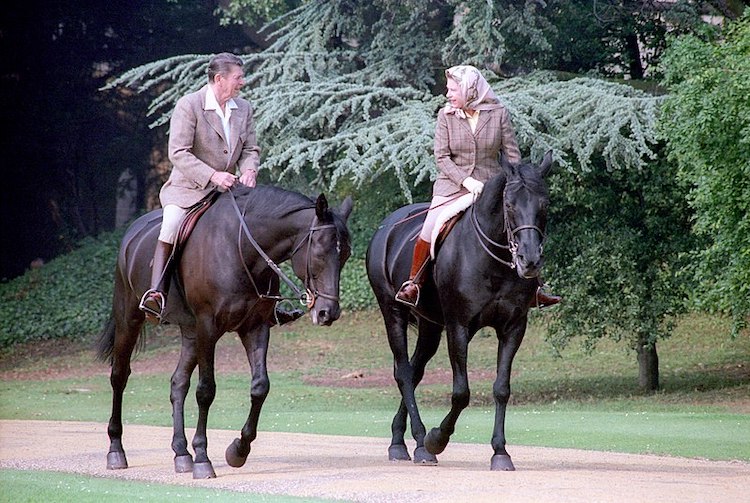
President Ronald Reagan riding horses with Queen Elizabeth II during visit to Windsor Castle in 1982. (Photo: White House Photographic Collection, Public domain)
Over the course of her reign, she met 13 sitting U.S. presidents and many other world leaders like Indira Gandhi, Mikhail Gorbachev, and every German chancellor since World War II.
She was also known for her love of animals, in particular horses and dogs. She rode her first horse at 3 years old and was a lifelong fan of horse racing. She inherited breeding and racehorses from her father when she took over the throne and had nearly 2,000 wins as a racehorse owner. Equal to her love for horses was her commitment to her dogs and, in particular, corgis. The queen is known for popularizing the Pembroke Welsh Corgi, having bred and owned over 30 in her lifetime.
Operation London Bridge
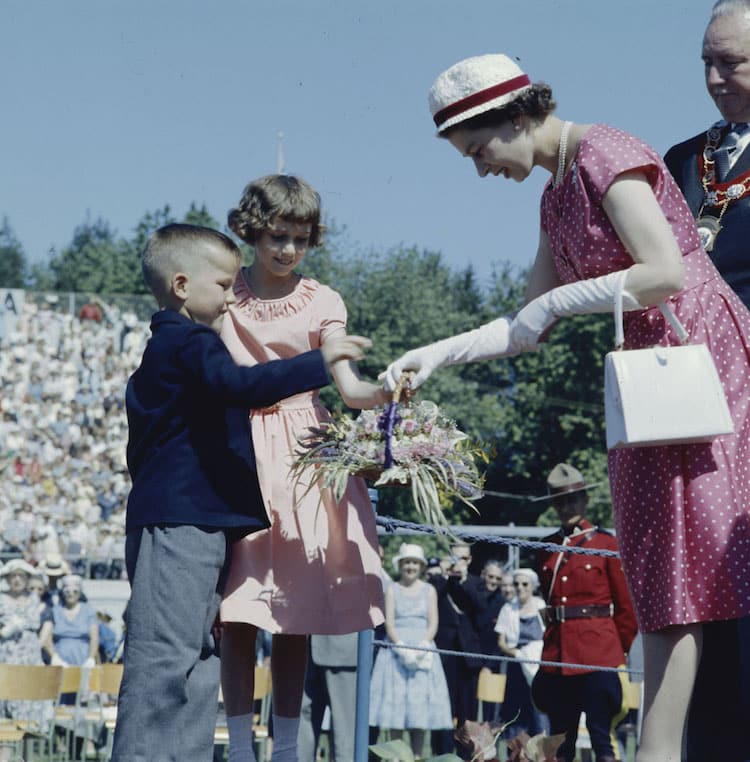
Queen Elizabeth II receiving bouquets of flowers from children in Ontario, Canada in 1959. (Photo: Library and Archives Canada, CC BY 2.0)
What happens now is all part of a carefully choreographed plan called Operation London Bridge. First created in the 1960s and revised several times throughout the years, it is a detailed funeral plan for Queen Elizabeth II. Operation London Bridge began as soon as the monarch passed, with specific details about who should be informed about her death and in what order. According to the plan, Queen Elizabeth's private secretary was the first official to convey the news to the prime minister, after which time the announcement spread down the chain of command. The governments of all Commonwealth nations, where the Queen was also sovereign, were also informed.
The press is also part of the plan, with the BBC switching to prepared portraits before presenters, dressed in dark clothing, took to the air to announce the news. Operation London Bridge also details special gun salutes, flags flying at half mast, and when government officials make public statements.
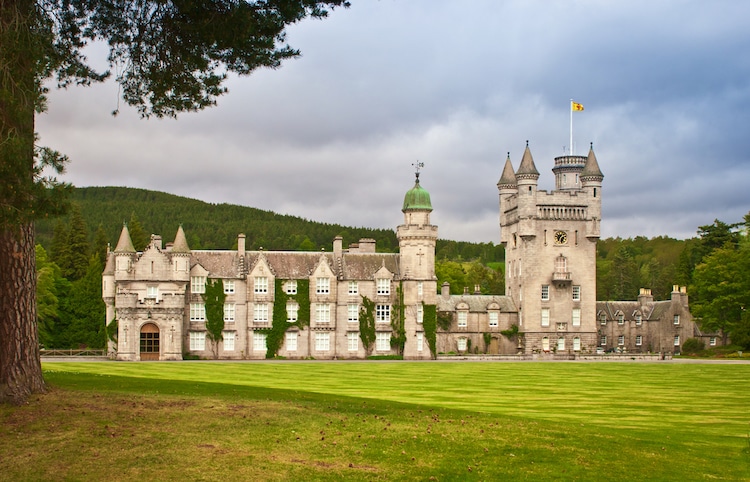
Balmoral Castle (Photo: andyb1126/Depositphotos)
At the same time, another plan called Operation Unicorn is also in action. This plan was created to discuss what would happen if the Queen happened to die while in Scotland, which is what actually happened. Operation Unicorn calls for Queen Elizabeth's body to lay in rest at Palace of Holyroodhouse, the monarch's official residence in Edinburgh. Her coffin will then be carried down the Royal Mile to St Giles' Cathedral, after which it will be placed on a train to travel back to London.
Ten days after her passing, the state funeral will take place in Westminster Abbey, led by the Archbishop of Canterbury. The Queen's body will be buried in a tomb at King George VI Memorial Chapel in St George's Chapel, Windsor Castle, next to Prince Philip. The day of the funeral will be declared a national day of mourning, with two minutes of silence to take place at midday across the United Kingdom.
When will King Charles III be crowned?
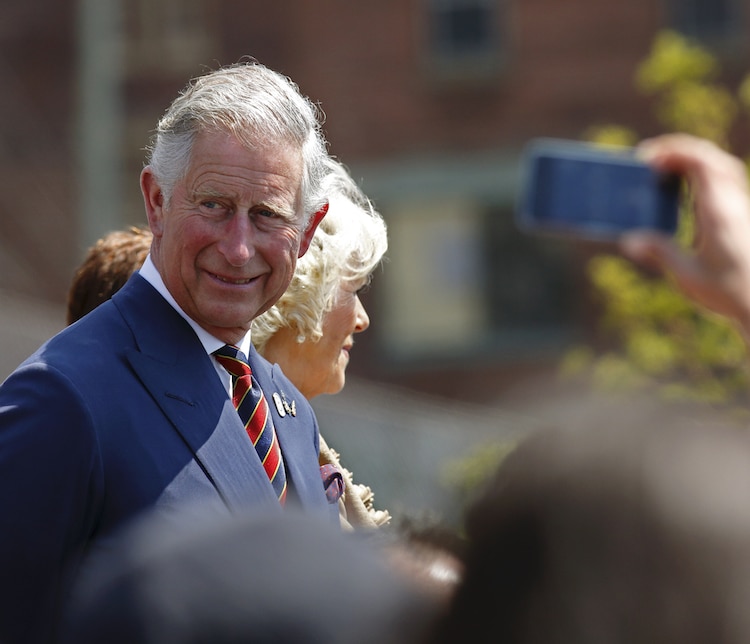
King Charles III in 2012. (Photo: jamieroach/Depositphotos)
As soon as Queen Elizabeth II passed, her son Prince Charles became king. The day of her death, it was announced that he would be officially called King Charles III. His wife, Camilla, is now Queen Consort. As Operation London Bridge details Queen Elizabeth's funeral, Operation Spring Tide lays out the plan for King Charles' ascension to the throne.
It's expected that on Saturday, September 10, 2022, a ceremonial body known as the Accession Council will meet at St. James Palace in London to officially declare the new king. After a proclamation is read aloud, it is signed by senior officials such as the prime minister and Lord Chancellor.
King Charles will then attend a second meeting with the Accession Council where he will make a declaration and swear to uphold the Church of Scotland. Then a public proclamation declaring that Charles is king will be made among fanfare from the balcony above Friary Court in St James's Palace.
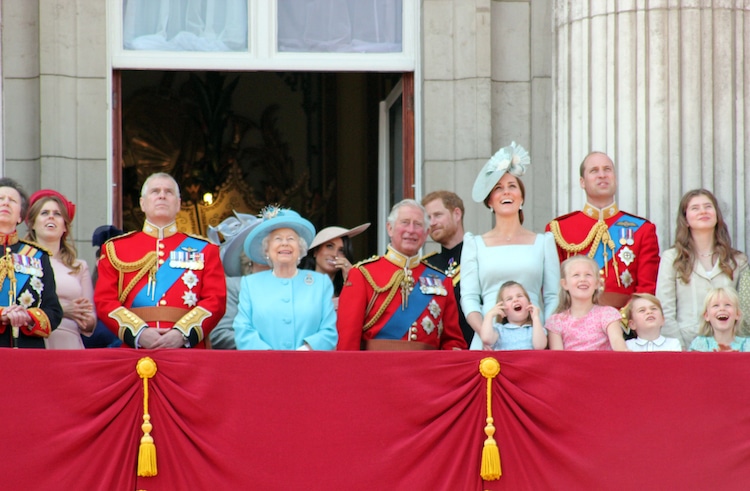
Queen Elizabeth and Royal Family at the 2018 Trooping the Colour. (Photo: cheekylorns2/Depositphotos)
From that moment forward, King Charles is a monarch in every way—except one. He won't be able to wear a crown until his coronation. And that, most likely, won't happen for at least a year out of a sign of respect for the recently deceased monarch. In fact, Queen Elizabeth's coronation was held more than a year after her father passed.
At 73 years old, King Charles is well-prepared for his role. And during this year's Jubilee, Queen Elizabeth expressed her confidence in her son and daughter-in-law to carry on her legacy.
“When, in the fullness of time, my son Charles becomes King,” she said, “I know you will give him and his wife Camilla the same support that you have given me.”
Related Articles:
Queen Elizabeth Celebrates Turning 96 With a Portrait Honoring Her Loves in Life
Mattel Releases Queen Elizabeth II Barbie Doll To Celebrate the Monarch’s 70 Years of Service
Adorable Toddler in Costume Receives Letter From The Queen Complimenting Her “Splendid Outfit”











































































